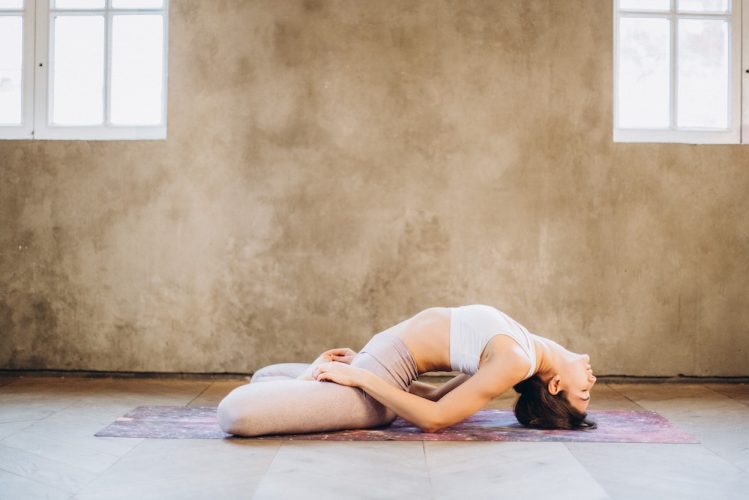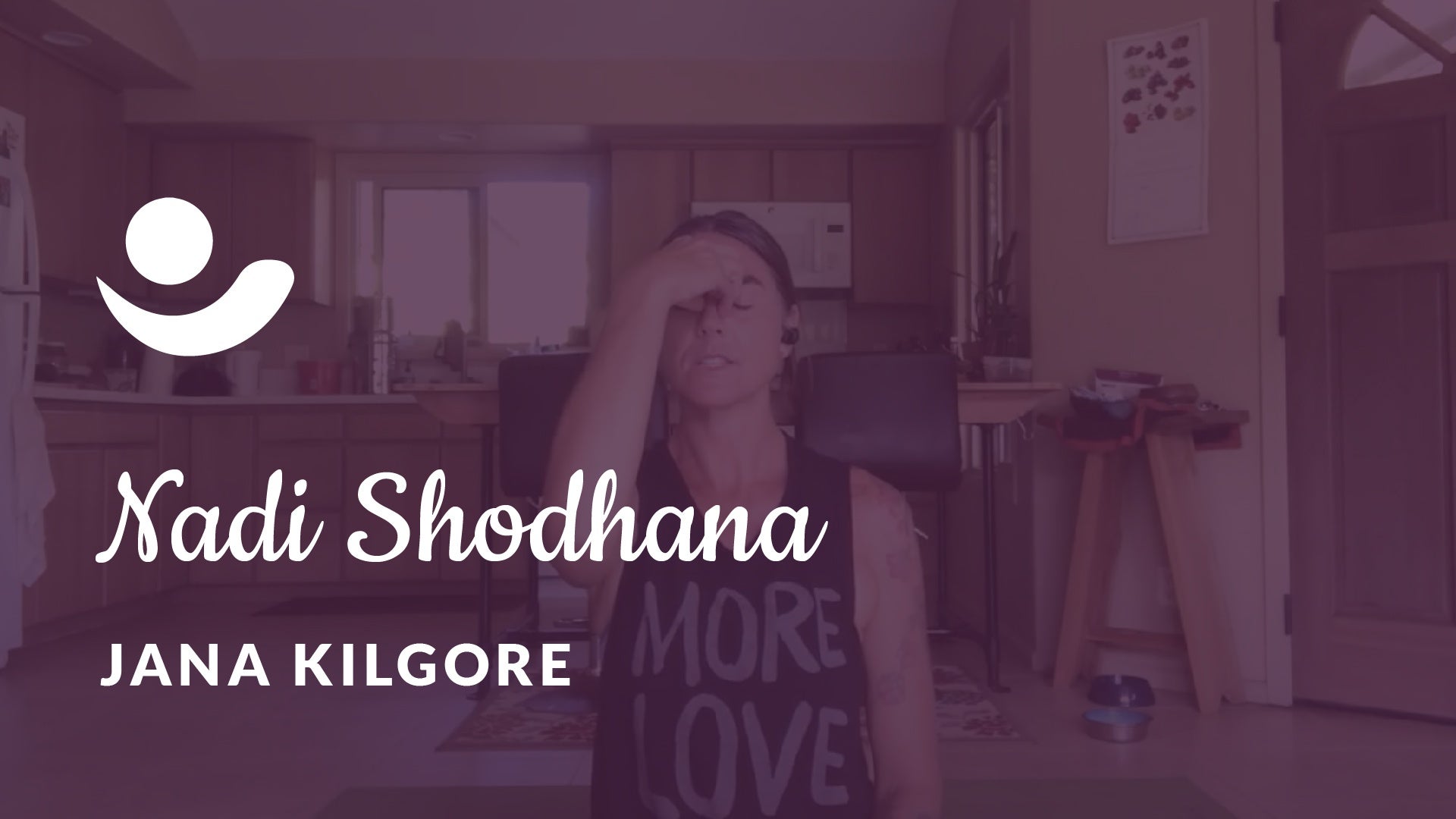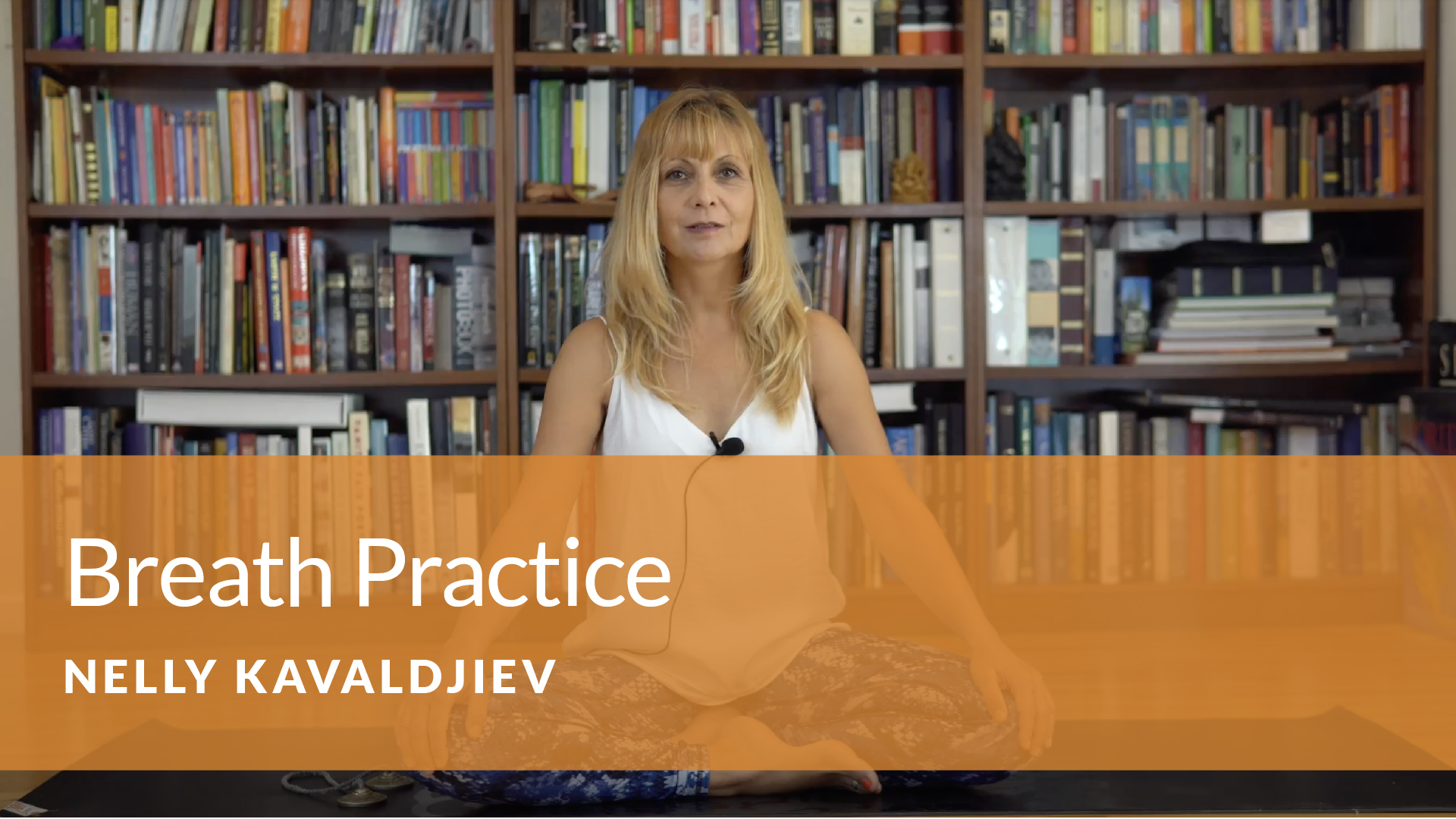Dance training for 18 years of my life led me to suffer many injuries. One that stands out to me is lower-back pain from practicing backbends incorrectly. Once I became a yoga teacher, I noticed my students approaching backbends the same way I did before learning how to protect my low back.
It is easy to push into a backbend and completely disregard what is happening in the lower back for the sake of creating a bigger arch. However, when you allow any back-bending posture to sit exclusively in your lower back, you can develop an injury. For instance, if not practiced with mindfulness, upward-facing dog pose, or Urdva Mukha Savanasana, can harm your spine. When the core is not pulled in and shoulders are not pulled back, we will fall into letting the backbend happen almost entirely in the low back.
How do we avoid harming our low back? Upward-facing dog is a great place to start because many of us are so familiar with it. We often breeze right through it in Vinyasa classes. The goal of any backbend is to lift up and out of the low back and have the beautiful arch happen in the mid back. Take notice of how your body feels when you go into upward-facing dog in your classes. Is there any tightness accumulating in your low back? Can you adjust the pose to feel what it is like when you lift out of the low back?
Let’s break down what is needed for a successful backbend. For reference, we will continue looking at upward-facing dog.
A General Note
Approach backbeats with caution and compassion for your body. On the first try of almost any backbend, it feels comfortable to get a little more arch if we sink into the low back. Do not let this happen! Go slow, and tune into the body. Start with smaller backbends, and use props if needed, so you can feel into when you are resting into the low back or lengthening out of it.
Complications and Contraindications
If you already struggle with low-back pain or are pregnant, you may want to stay away from this pose.
Alignment Pointers
- Chest presses forward – energetically the pose is moving forward.
- Shoulders away from the ears, pulling down and back
- Hands directly under the shoulders, pressing the floor away to elevate
- Tops of the feet press into the ground, so the shins, knees, and upper thighs are lifted.
- Both hands and the tops of both feet are the only body parts on the ground.
Areas of the Body that are Engaged
- Core
- Legs
- Glutes
- Upper back and arms, as shoulders press down and back
Areas of the Body that are Stretching
- Chest presses forward to lengthen the spine out of the lower back, from here you can arch further through the mid back. This is done by pulling back through the wrists to send the chest forward.
- Slight belly stretch
- Hip flexors are lengthening.
- Head looks forward, and the neck lengthens up.
Troubleshooting Pain in the Posture
What do we do when we are in upward-facing dog for the hundredth time and our backs start to hurt? You might wonder why your back is hurting from a pose you know and practice often. Injuries can sneak up on us if we aren’t careful.
Revisit the alignment points. Are your wrists under your shoulders? Are you pressing the floor away through your hands? Is your chest pressing forward?
If your low-back pain becomes overwhelming, it is time to get out of that posture and possibly revisit another backbend, such as one with or without props like sphinx or baby cobra. Work on those backbends until you feel ready to try a larger backbend. Try warming up with baby cobra before you head into upward-facing dog during class.
Figuring out if this is a pose you need to take out of your practice can be a challenge. No matter if the backbend is upward-facing dog or camel, learning when it is right to retire a pose is essential. I have found that, because of my dance injuries, some poses do more harm than good for my body. Assessing if the pose is helpful for you physically and mentally, rather than egotistically, will be your ultimate guide of harming yourself unintentionally.
What happens when we practice backbends incorrectly?
Backbends can be a wonderful addition to your growing yoga practice, but can lead to injury when practiced incorrectly. Let’s break down some anatomy:
The Spine
Anatomically, the spine is divided into three sections: the cervical spine (neck), the thoracic spine (upper and mid back), and lumbar spine (low back). Your cervical spine and lumbar spine are incredibly mobile. Your thoracic spine doesn’t have as much bend as your cervical and lumbar spine, yet this is the part of the back that is supposed to be bending in backbends. You’ll notice how much you can tilt your head back and forth, from side to side and left to right over your shoulders with ease. Your lumbar spine is also incredibly flexible, as when you are in a backbend you feel you can get an inch more of an arch if you compress the lower back more. Our thoracic spine doesn’t bend as much, and when you are lifting up out of the low back you will feel as though you may not be arching as much anymore. When you do this you are actually arching correctly and allowing the thoracic spine to be mobile and lengthen instead of the low back overextending.
So what happens when we compress the lumbar spine through overextending? Your lumbar spine reaches from just below your ribcage to your sacrum, there is a lot of room there for injury when we look at spinal compression and muscle attachments. I won’t go into too much detail here, but when we compress the low back by sinking into it, that low back pain can affect the muscles in the back and even the hips, causing tightness or injury in the low back as well as surrounding parts of the body.
However, backbends are great to include in your practice. No matter if you feel renewed in wheel pose or if a bolster under your spine for a restorative heart opener is more your vibe, backbends offer the body some amazing benefits. Lengthening the entire spine is always the goal when back-bending. If we find ourselves not moving our spine very much through the day, back-bending may feel really good to you!
If you already struggle or have struggled with low back pain in the past (like me) you may want to assess what kind of back-bending practice is suitable for you. There are so many different styles of backbends and modifications that can enhance your relationship with backbends! Grab your props, grab your friends, and go take a yoga class!
















